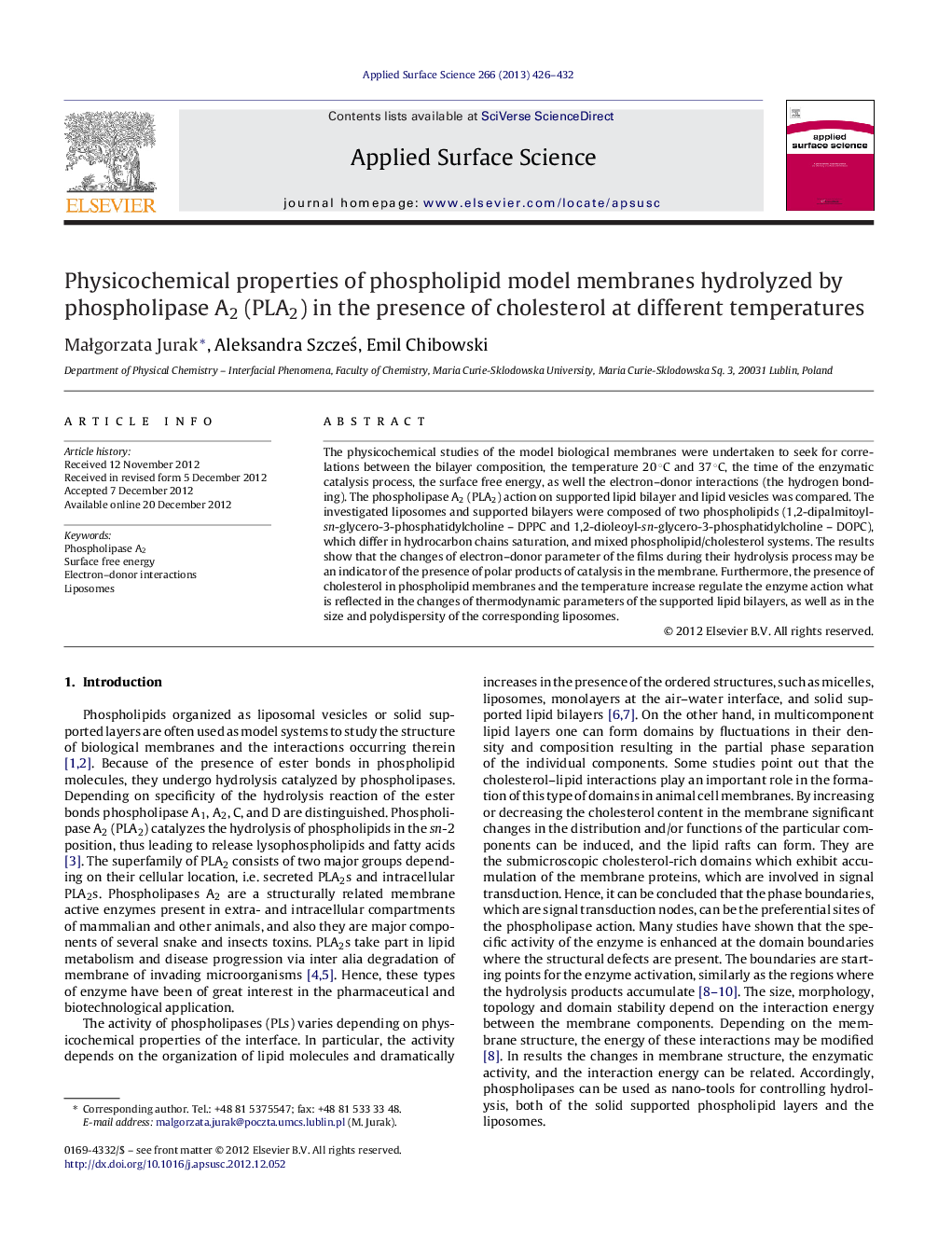| Article ID | Journal | Published Year | Pages | File Type |
|---|---|---|---|---|
| 5363880 | Applied Surface Science | 2013 | 7 Pages |
The physicochemical studies of the model biological membranes were undertaken to seek for correlations between the bilayer composition, the temperature 20 °C and 37 °C, the time of the enzymatic catalysis process, the surface free energy, as well the electron-donor interactions (the hydrogen bonding). The phospholipase A2 (PLA2) action on supported lipid bilayer and lipid vesicles was compared. The investigated liposomes and supported bilayers were composed of two phospholipids (1,2-dipalmitoyl-sn-glycero-3-phosphatidylcholine - DPPC and 1,2-dioleoyl-sn-glycero-3-phosphatidylcholine - DOPC), which differ in hydrocarbon chains saturation, and mixed phospholipid/cholesterol systems. The results show that the changes of electron-donor parameter of the films during their hydrolysis process may be an indicator of the presence of polar products of catalysis in the membrane. Furthermore, the presence of cholesterol in phospholipid membranes and the temperature increase regulate the enzyme action what is reflected in the changes of thermodynamic parameters of the supported lipid bilayers, as well as in the size and polydispersity of the corresponding liposomes.
Graphical abstractDownload full-size imageHighlights⺠Presence of cholesterol in lipid membranes regulates the PLA2 activity. ⺠Cholesterol in the phospholipid membrane influences its surface free energy and stability. ⺠Electron-donor parameter may be an indicator of the hydrolysis effectiveness.
